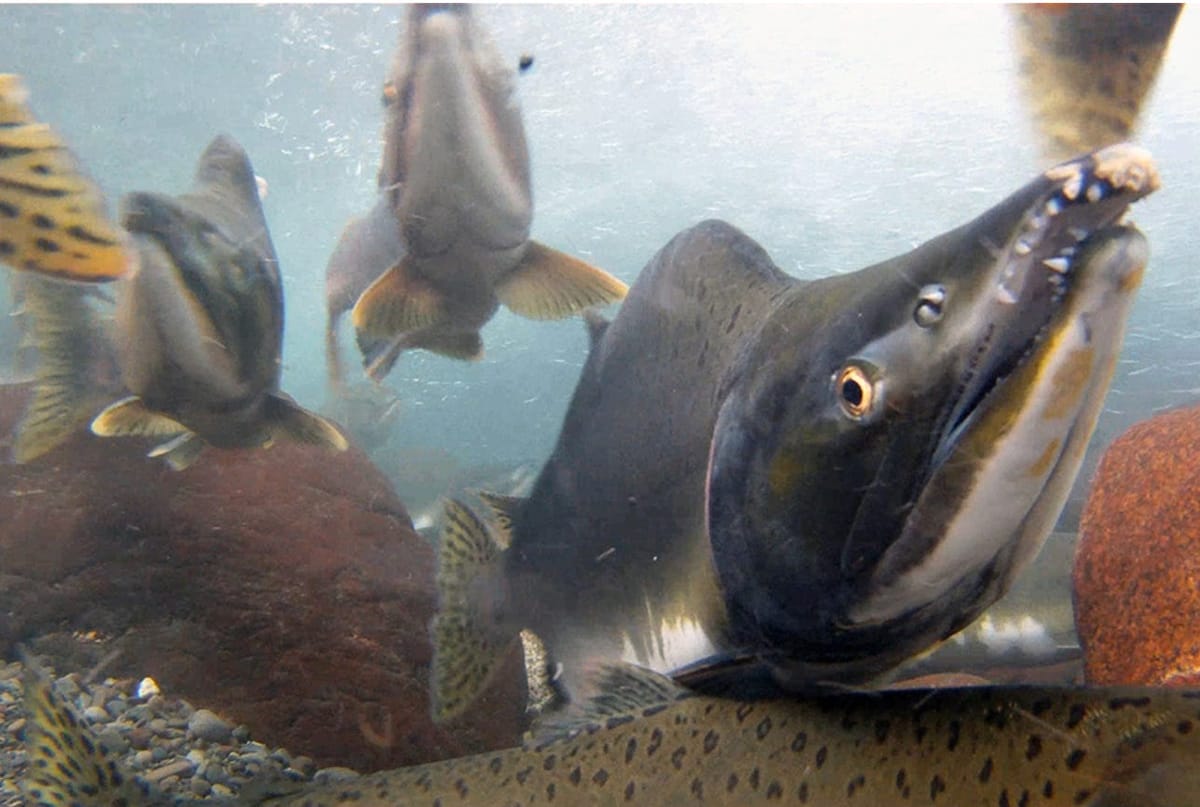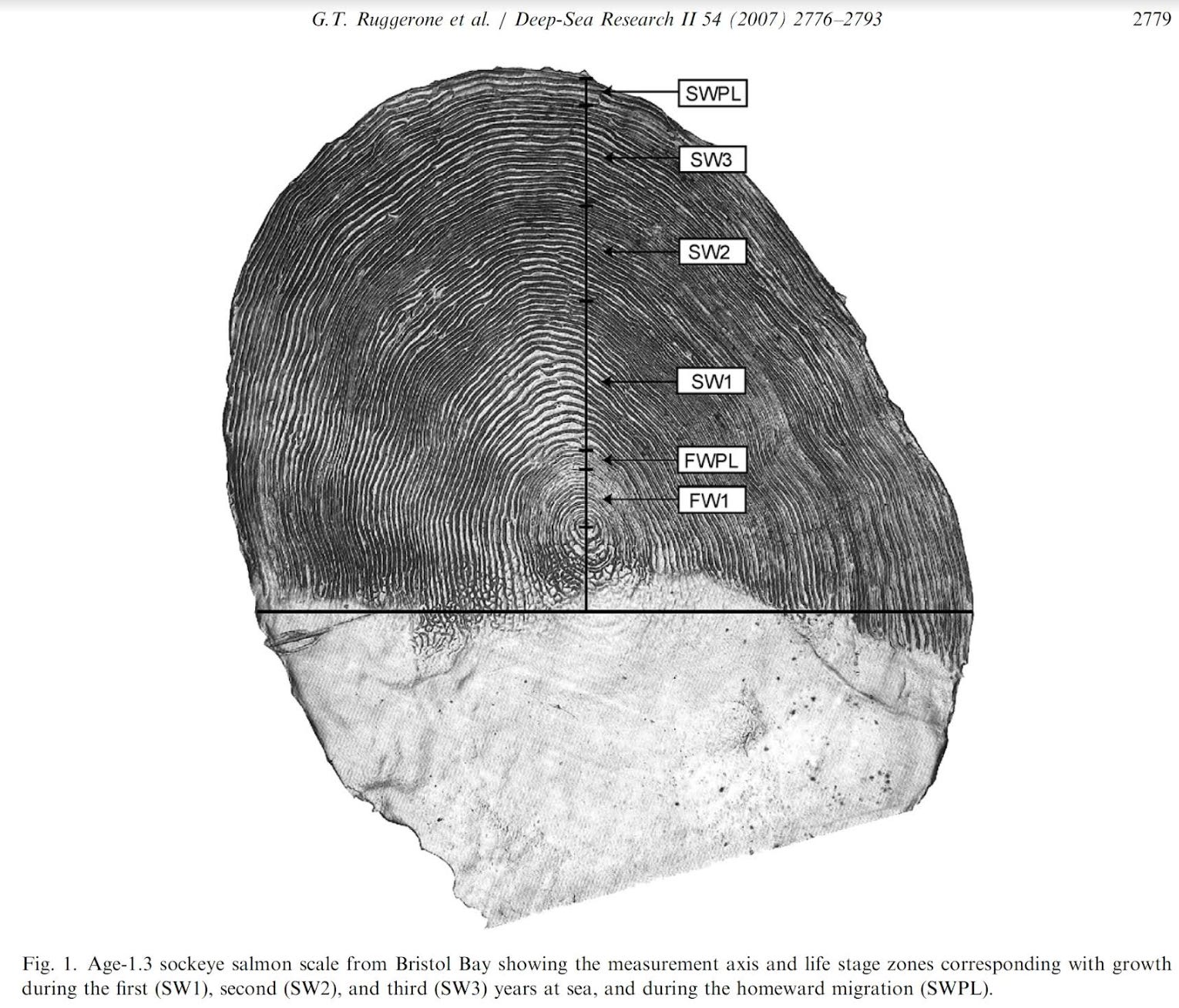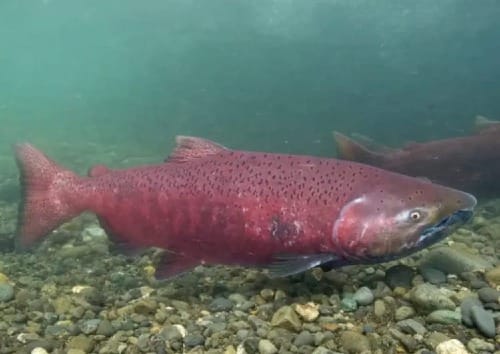Interesting stuff: Utility data request gets rejected, a heat pump in every village home, and a "zero-sum game" for pink and sockeye salmon?
Big energy news for the Northwest Arctic Borough, while a new study adds to the pile of evidence suggesting that booming, hatchery-boosted pink salmon populations could be harming wild sockeye.

Welcome back to Interesting Stuff. Items today include a new study that adds to the scientific literature showing hatchery-raised fish could be negatively affecting Alaska sockeye salmon; a rejection of a high-profile advocacy group’s request for utility data, and a new federal grant that could transform home heating in an entire region of Alaska.
A quick update on Northern Journal: Things will be a little quieter than normal over the next few weeks as I finish up a final project for Alaska Public Media under a contract I’ve had with them for the past year. But then I have some exciting plans for 2024 — I’m waiting to hear back on a big grant proposal that would support a fisheries-related project, and I’m planning the launch of the Northern Journal podcast later this spring. And coverage of energy, fisheries and other natural resources will continue — stay tuned.
Northern Journal is a reader-supported publication. To receive new posts and support my work, consider becoming a free or paid subscriber.
This edition of Northern Journal is sponsored by The Boardroom, a shared workspace in Anchorage. The Boardroom’s array of comfy and light-filled workspaces are a great change of pace from my home office; did you know there’s also a shared ski pass for Alyeska Resort that you can borrow if you’re a member? Check out options here.
Regulators reject green power group’s request for utility data
The Regulatory Commission of Alaska, which oversees the state’s electrical utilities, has rejected an advocacy group’s request for the usage data of tens of thousands of individual customers of Chugach Electric Association, the Anchorage-based cooperative.
Renewable Energy Alaska Project, or REAP, had asked the commission to compel Chugach to produce the data amid a review of a recent proposal by the utility to raise its rates. REAP said it needed the information to propose an alternative new price structure for the utility — with the goal of conserving natural gas supplies amid an impending shortage.
Chugach and an array of other utilities had objected to the request, saying it would require too much work and represented an invasion of customers’ privacy. Conservative leaning advocacy groups and media outlets sympathetic to the oil and gas industry also raised alarms about the potential release of the data.
In a decision this week, an administrative law judge appointed by the commission, Nolan Oliver, rejected REAP’s request. In his four-paragraph analysis, Oliver wrote that the group "has not sufficiently articulated the benefit that its rate design will provide beyond being an alternative proposal."
Citing Chugach’s arguments that producing the data would require thousands of dollars and more than 100 hours of employee time, Oliver said that the “burden and expense” of producing the data would exceed its benefit.
In an email, Chris Rose, REAP’s executive director, said his group was disappointed with the decision, and with what he called Oliver’s inability “to provide a valid legal reason for rejecting our request for data essential to developing a rate design that promotes the conservation of natural gas, which state law requires.”
“With a Cook Inlet natural gas shortage looming, REAP will continue to work in the public interest to conserve the region’s quickly diminishing supply of local gas,” Rose wrote. “We hope Chugach Electric will cooperate with us to find a way to do that.”
New salmon study adds to evidence that pink salmon could be crowding out sockeye
A new analysis of nearly 25,000 fish scales offers more evidence that the millions of pink salmon churned out by Alaska fish hatcheries could be harming wild sockeye salmon populations when they meet in the ocean, according to the scientists who authored the study.
The new peer-reviewed paper, published this week in the ICES Journal of Marine Science, analyzed growth rates that could be deduced from the fish scales, similar to trees’ yearly growth rings.

The paper was built on a unique aspect of the life cycle of pink salmon, which are primarily targeted by commercial fishermen: Their abundance is high in odd-numbered years, and lower in even-numbered years. Those booms and busts allowed authors Peter Rand and Gregory Ruggerone to tease out whether sockeye salmon — which are more highly valued by sport and personal use fishermen — were growing at lower rates during odd years, when pink salmon are more numerous.
Their analysis showed that was the case across the Gulf of Alaska — a dynamic that Rand and Ruggerone describe as a “zero-sum game” between the two species. It found that yearly growth of sockeye was depressed by as much as 17% at times when pink salmon abundance was high.
“This is the first time we’ve looked at populations across coastal Alaska, and we see the same signal in all of them,” Rand said in an interview. “It’s quite compelling.”
There’s been increasing debate in recent years about the impacts on other salmon species of growing populations of pink salmon, and Ruggerone last year published a review paper that documented what it called “consistent and strong” evidence of competition. The pinks have been benefiting from warming ocean waters and are also boosted by hatcheries around Alaska that raise them to bolster harvests by commercial fishermen.
The number of pinks returning annually from the North Pacific Ocean rose to nearly 800 million in 2021, up from 170 million in the early 1970s, with hatcheries contributing some 80 million fish each year, the authors wrote in their new study.
Some policymakers, Ruggerone said, have been holding out for more documentation of competition between hatchery pinks and wild salmon, and the new paper should serve as additional evidence, he added.
A spokesperson for the Alaska Department of Fish and Game, whose commissioner has said it’s an “open question” if there’s a relationship between hatchery-raised pinks and wild king salmon populations, said no one was available Thursday to comment on the new study.
New grant could revolutionize home heating and power generation for Northwest Alaska
A roughly $50 million grant from the Biden administration will pay for the installation of new heating technology in every village home in Northwest Alaska, as well as 10 new solar farms and battery storage projects.
The U.S. Department of Energy grant will help pay for some 850 heat pumps in 10 villages in Alaska’s Northwest Arctic Borough — a cold, remote region off the road system where residents face prices for flown-in heating fuel that can reach $16 a gallon.
The 850 heat pumps represent one for “every residence” in the villages of Ambler, Buckland, Deering, Kiana, Kivalina, Kobuk, Noatak, Noorvik, Selawik, and Shungnak, according to the borough’s application.
The heat pumps, which run on electricity, will allow village residents to keep their homes warm using power generated by the solar farms, or with electricity produced by utility-scale diesel generators, rather than expensive home heating fuel, said Ingemar Mathiasson, the borough’s energy manager. Yearly savings for residents could be $2,000, he said, while that figure could reach $2 million for the full region, according to the Department of Energy.
The new solar farms will be owned and operated by the tribal governments in each of the villages, which will sell the power into the communities’ electrical grids.
NANA, the regional Alaska Native-owned corporation, is contributing $5 million for the project in matching funds, it said in a press release.
The grant builds on pre-existing efforts by the borough to build renewable energy projects and electrify home heating systems. A $2.2 million solar farm was recently built in the village of Shungnak, while dozens of heat pumps have already been installed in homes in the village of Ambler.
Arctic Valley could get two new public use cabins
Anchorage’s Arctic Valley ski area is set to get two new public use cabins after the city Assembly this week approved a proposal from the nonprofit that operates the area.
The Anchorage Ski Club had planned to use federal coronavirus relief money granted by the city to redesign its trailhead to better serve summer visitors.
But the club decided to build two new public use cabins when the original project proved too expensive and complicated because of utility-related problems, President Rich Todd wrote in a recent letter that asked the city to approve the change of plans.
The $90,000 in public money will now be used for the new cabins near Arctic Valley's lower parking lot, with a "great view of the ski area and Ship Creek Valley," Todd wrote. They'll sleep up to four people and be available year-round, he said.
I make Northern Journal’s stories available, for free, to news outlets — and Alaskans — across the state. I only earn money when readers pay for a voluntary membership. If you find this information useful, please consider joining. If you’ve already signed up, thanks so much for your support.



